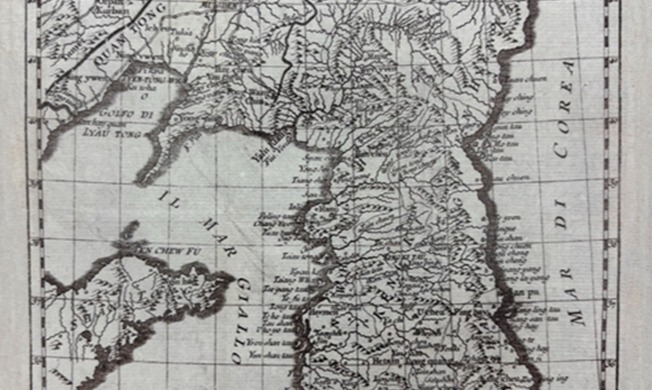- 한국어
- English
- 日本語
- 中文
- العربية
- Español
- Français
- Deutsch
- Pусский
- Tiếng Việt
- Indonesian
By Yoon Sojung and Kim Hyelin
Photos = Jeon Han
Video = Lee Jun Young
BlingOne and Lenin Tamayo.
These two Peruvian music acts are a cultural bridge between Korea and Peru, Peruvian Ambassador to Korea Paul Duclos said.
BlingOne is the first K-pop trio composed entirely of Peruvian girls and Tamayo is an indigenous rising star known for mixing a K-pop style of music with traditional aspects of Peruvian culture. Tamayo's music is named "Q-pop" as his songs are produced in the K-pop style but whose lyrics are in Quechua, an indigenous language of Peru.
Ambassador Duclos added that Peruvian youth love Korean pop, food and overall culture.
Another link between both countries is the Asia-Pacific Economic Cooperation (APEC) Summit. The Peruvian capital of Lima will host this year’s APEC in November, followed by next year’s gathering in Gyeongju, Gyeongsangbuk-do Province, a city of Korean tradition and history.
Dubbing it "an excellent coincidence," the diplomat said Korea can hopefully continue the "APEC for the People" initiative of the Lima summit, which marks APEC's 25th anniversary, at next year's event.
Turning to bilateral relations, which marked their 60th anniversary last year, Ambassador Duclos called the conclusion of the free trade agreement (FTA) in 2011 and upgrading of ties to a comprehensive strategic partnership a year later as the two key milestones in official ties.
On why Peru pursues defense cooperation with Korea, he emphasized bilateral trust "built over decades of working together."
The following are excerpts from the July 31 interview with the ambassador at his official residence in Seoul's Yongsan-gu District.

Peruvian Ambassador to Korea Paul Duclos in a Korea.net interview on July 31 explains the results of bilateral relations as both countries last year marked the 60th anniversary of ties.
Korea and Peru marked 60 years of diplomatic ties last year. What have been the biggest outcomes of bilateral cooperation?
The first is our free trade agreement (FTA) concluded in 2011. Thanks to the FTA, Korea became Peru's fifth-largest trading partner. A year after the accord took effect, both countries in 2012 upgraded their ties to the level of a comprehensive strategic partnership. This expanded our cooperation to sectors ranging from economy, information technology, digital, technology and the environment to medicine and the defense industry. Peru also plans to join the Organisation for Economic Co-operation and Development (OECD) in two to three years, and Korea's role is crucial in this process.
What changes has bilateral trade seen since the FTA took effect in 2011?
Bilateral trade volume showed over a six-fold jump from 2010, after the FTA was signed. Thanks to the deal, Korean consumers can buy Peruvian avocados, asparagus, bananas and grapes at grocery stores. We're now working to introduce Peruvian pomegranates and blackberries to Korea.
The FTA also allowed opportunities in cooperation. Over 100 Korean companies operate in Peru like SK Innovation, which is in charge of the Camisea gas exploration project, and Hyundai Heavy Industries and Hyundai Engineering & Construction, which lead the construction of Chinchero International Airport in the province of Cuzco.
What joint projects are ongoing in Peru? What areas do both sides wish to expand cooperation in?
Personally, I'd like to highlight the bilateral cooperation center for e-government. Peru puts priority on developing digital technology and hopes Korea shares its digital experience and expertise.
I must also mention the defense sector. Peru recently signed a top-level contract with Hyundai Heavy Industries to build a shipyard and three ships at the port of Callao. We also signed a contract to jointly produce armored vehicles with Hyundai Rotem and began negotiations with the Korean government and Korea Aerospace Industries on joint production of parts for the FA50 light fighter jet. Previously, we received retired military vessels from Korea and worked together to replace Peruvian trainer aircraft with the KA-1 and KT-1.
Why is Peru so active in cooperation with Korea in the defense industry?
This is the result of trust built over decades of working together. Korea is the only Asian country that Peru has signed a deal with to build three military ships. I also stress that Peru is also the only country in Latin America that strongly promotes defense cooperation with Korea.
Describe the upcoming APEC Summit in Lima. What can Peru, a three-time host of the event, advise Korea, which will hold next year's gathering?
Peru has hosted the APEC Summit every eight years as in 2008, 2016 and this year. Peru's hosting of the event this year and Korea's next year is also an excellent coincidence. Both countries are great examples of faithfully following APEC's vision for overall economic growth.
At this year’s APEC, the main agendas are continuing free trade in the Asia-Pacific region, supporting innovation and digitalization to formalize small and medium enterprises, and introducing renewable energy and green hydrogen for sustainable development and food security. I look forward to the visit of President Yoon Suk Yeol to Lima to attend the APEC Summit in November.
As this year marks APEC's 25th anniversary, we will host participatory events for the initiative "APEC for the People." Diverse events are scheduled for high-ranking government officials, academics, civic groups and students in sectors like science and technology and engineering. I also hope that Korea continues the initiative next year.
Hallyu in Peru has boomed every year, with King Sejong Institute opening a Lima branch last year. As ambassador, what is the Korean Wave's status in your nation?
In general, Peruvians enjoy Korean culture. Young people have particularly embraced Korean culture like K-pop and food. The number of Korean restaurants in Lima is increasing. BlingOne, the first K-pop group with all three Peruvian members, was in Korea from December last year to July this year at the invitation of the World K-pop Center.
We also have Lenin Tamayo, who has merged K-pop and traditional Peruvian culture. He's never been to Korea but has released K-pop-style songs in Quechua, an indigenous Peruvian language. Named after K-pop, his music is dubbed "Q-pop." He and BlingOne are both popular in Peru and serve as a cultural bridge between both nations.
Peru has world-famous attractions like Machu Picchu. What places must Koreans go to when visiting your nation?
Before the COVID-19 pandemic, about 30,000 Koreans visited Peru every year. The country borders the Pacific Ocean to the west and the Andes mountains to the south. We also have the Amazon rainforest for experiencing diverse nature. I also recommend the well-developed gastronomic culture of Peru. In Lima, we had five out of the world's 50 highest-rated Michelin restaurants last year. I also recommend Inca Cola, which is only available in Peru. It's so popular in Peru that it even surpasses Coca Cola.
To fully enjoy Peruvian culture, visit the Sacred City of Caral north of Lima. This site of the Caral civilization dates back more than 5,000 years, long before the Incas. Sites of Inca ruins like Machu Picchu, one of the Seven Wonders of the World, attract many Korean visitors.
Peru has 25 Korea.net Honorary Reporters. Any concluding message to our readers worldwide?
I hope that Honorary Reporters from Peru and Korean readers grow closer in learning more about each other and discovering similarities in culture and history.

Peruvian Ambassador to Korea Paul Duclos on July 31 says his nation's musicians BlingOne and Lenin Tamayo are a cultural bridge between both countries and that Peruvian youth love Korean pop, food and overall culture.
[email protected]
